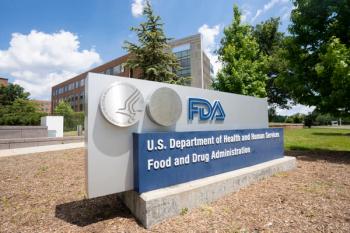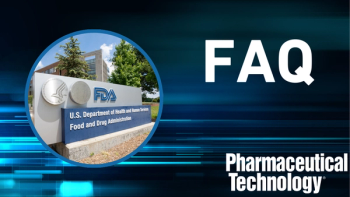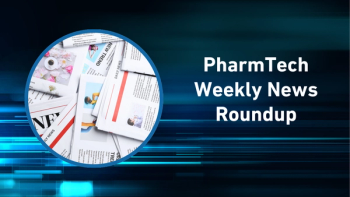
- Pharmaceutical Technology-01-02-2020
- Volume 44
- Issue 1
US Maintains Lead in Drug Development Despite Fewer Approvals in 2019
FDA’s approval rate slowed, but the US agency is still ahead of its international counterparts in green-lighting new drugs for market.
The FDA continues to approve drugs at a rapid pace, although fewer novel drugs (48) were approved by the Center for Drug Evaluation and Research in 2019 (1) compared with 59 in 2018 (2). Compared with other agencies around the world, however, FDA again lead other leading regulatory authorities in the number of approvals.
According to the Kyoto Encyclopedia of Genes and Genomes Drug Database, 35 drugs with new active ingredients were approved in Japan by the Pharmaceutical and Medical Devices Agency (PMDA) as of Nov. 4, 2019 (3), while the total number of European public assessment reports (EPAR) authorized medicines as of Nov. 1, 2019 that were novel included 15 based on new molecular entities, approved under a biologic license application, and one cell therapy (4). In India, just 16 new drugs were approved by the Central Drugs Standard Control Organization as of mid-November (5).
Looking at specific drugs, only one-Skyrizi (risankizumab-rzaa) from AbbVie for treatment of psoriasis-was approved in the United States, Europe, and Japan; the therapy was approved in Japan approximately one month in advance of approval in the US and Europe. Rozlytrek (entrectinib) and Evenity (romosozumab-aqqg) were approved in both the US and Japan, with the latter receiving approvals just days a part, and the former getting the okay in Japan two months before it received approval in the US (6).
Interestingly, many more drugs in 2018 were approved in two or all three jurisdictions, and several of the drugs approved in the US and Europe in 2018 didn’t receive approval in Japan until 2019, including Erleada (apalutamide), more than one year later, Braftovi (encorafenib), three to six months later), Mektovi (binimetinib), three to six months later, and Onpattro (patisiran sodium), 10 months later.
Many other drugs approved by FDA in 2018 did not receive approval by the European Medicines Agency (EMA) and/or PMDA until 2019, including Crysvita (burosumab), Trogarzo (ibalizumab), Palynziq (pegvaliase), Epidiolex (cannabidiol), Ajovy (fremanezumab), Lorbrena (lorlatinib), Vizimpro (dacomitinib), Libtayo (cemiplimab), Talzenna (talazoparib tosylate), Vitrakvi (larotrectinib sulfate), and Ultomiris (ravulizumab).
A study of decisions by FDA and EMA for 107 new drug applications during the period 2014–2016 found that the two agencies were in agreement on the majority (more than 90%) of approval decisions (7). Differences were largely due to different conclusions regarding efficacy, sometimes based on the same data and sometimes on differing data.
In a separate study, it was found that FDA approved 170 new therapeutic agents between 2011 and 2015, while EMA granted marketing authorization to 144 (8). In addition, the median total review time at FDA was much lower, on average 60 days shorter. FDA also approved more orphan drugs than EMA (43.5% vs. 25.0% of the total).
FDA approves many “firsts” in 2019
Many of the new therapies approved by FDA in 2019 were developed to treat rare diseases, and most of these drugs are the first treatments ever approved for these diseases. Examples include Celgene’s Reblozyl (luspatercept–aamt), which reduces the need for blood transfusions in anemic patients with beta thalassemia (9); Ablynx’s Cablivi (caplacizumab-yhdp) injection, the first therapy specifically indicated, in combination with plasma exchange and immunosuppressive therapy, for the treatment of adult patients with acquired thrombotic thrombocytopenic purpura, a rare and life-threatening blood clotting disorder (10); and Pfizer subsidiary FoldRx’s oral therapies Vyndaqel (tafamidis meglumine) and Vyndamax (tafamidis), the first FDA-approved treatments for heart disease caused by transthyretin mediated amyloidosis (11).
Other therapies for rare diseases for which the first new drugs were approved by FDA in 2019 include Givlaari (givosiran) from Alnylam Pharmaceuticals for acute hepatic porphyria, a genetic disorder resulting in the buildup of toxic porphyrin molecules (12); Turalio (pexidartinib) from Daiichi Sankyo for symptomatic tenosynovial giant cell tumor, a non-malignant tumor that causes the synovium and tendon sheaths to thicken and overgrow (13); targeted therapy Adakveo (crizanlizumab-tmca) from Novartis for vaso-occlusive crisis, a common and painful complication of sickle cell disease (14); and Scenesse (afamelanotide) from Clinuvel for pain due to phototoxic reactions upon exposure to light (15).
Several of the approved drugs are designed to treat cancer, including the first PIK3 inhibitor Piqray (alpelisib) from Novartis (16). The drug is used in combination with the FDA-approved endocrine therapy fulvestrant, to treat postmenopausal women, and men, with hormone receptor-positive, human epidermal growth factor receptor 2-negative, PIK3CA-mutated, advanced or metastatic breast cancer. The disease must be detected with companion diagnostic test therascreen PIK3CA RGQ PCR Kit from QIAGEN Manchester, which also received FDA approval in 2019.
Of note, Piqray was the first new drug application for a new molecular entity approved under the Real-Time Oncology (RTOR) pilot program, which permits FDA to begin analyzing key efficacy and safety datasets prior to the official submission of an application, allowing the review team to begin their review and communicate with the applicant earlier. Piqray also used the updated Assessment Aid, a multidisciplinary review template intended to focus FDA’s written review on critical thinking and consistency and reduce time spent on administrative tasks. With these two pilot programs, Piqray was approved approximately three months ahead of the PDUFA VI deadline.
Two of the new drugs approved by FDA in 2019 address medical conditions suffered by women. Zulresso (brexanolone) injection from Sage Therapeutics is the first drug approved by FDA specifically to treat postpartum depression (17). Vyleesi (bremelanotide) from AMAG Pharmaceuticals treats acquired, generalized hypoactive sexual desire disorder in premenopausal women (18). FDA identified female sexual dysfunction as one of 20 disease areas of high priority and focused attention in 2012.
Alternative delivery methods
Some of the drugs approved by FDA are interesting due to their route of delivery. Novo Nordisk’s Rybelsus (semaglutide), oral tablets, is the first glucagon-like peptide receptor protein approved by the agency to improve control of blood sugar in adult patients with type 2 diabetes that does not need to be injected (19). Baqsimi nasal powder, from Eli Lilly and Company, meanwhile, is the first glucagon therapy approved by FDA for the emergency treatment of severe hypoglycemia that can be administered without an injection (20).
Also of note was the agency’s approval of Janssen Pharmaceuticals’ Spravato (esketamine) nasal spray, in conjunction with an oral antidepressant, for the treatment of treatment-resistant depression (21). Esketamine is the s-enantiomer of ketamine, which was approved under the brand name Ketalar in 1970.
New antibacterial, antiviral and antifungal meds
Developing new antibiotics and antiviral agents is a priority of FDA as concerns over drug resistance continue to rise; three 2019 approvals fall under this category. The Global Alliance for TB Drug Development received approval for Pretomanid tablets in combination with bedaquiline and linezolid for the treatment of a specific type of highly treatment-resistant tuberculosis (TB) of the lungs (22). This drug was approved under the Limited Population Pathway for Antibacterial and Antifungal Drugs pathway and also received FDA’s Qualified Infectious Disease Product (QIDP) designation and a Tropical Disease Priority Review Voucher.
Nabriva Therapeutics’ Xenleta (lefamulin) was approved for the treatment of with community-acquired bacterial pneumonia and also received QIDP designation (23). Fetroja (cefiderocol), an antibacterial drug from Shionogi & Co. for treatment of complicated urinary tract infections also received the QIDP designation (24).
FDA also approved Sentosa SQ HIV Genotyping Assay (Vela Diagnostics USA), the first HIV drug resistance assay that uses next-generation sequencing (NGS) technology (25).
New pediatric therapies
One of FDA’s 2019 approvals making significant news for its price and questions about data integrity was for Zolgensma (onasemnogene abeparvovec-xioi), the first gene therapy approved to treat children less than two years of age with spinal muscular atrophy (SMA), the most severe form of SMA and a leading genetic cause of infant mortality (26). AveXis, which is a division of Novartis, also received a rare pediatric disease priority review voucher.
The oral drug Ruzurgi (amifampridine) from Jacobus Pharmaceutical Company was granted the first FDA approval of a treatment specifically for pediatric patients with Lambert-Eaton myasthenic syndrome (27). Pfizer’s Fragmin (dalteparin sodium) injection, initially approved for adults in 1994, received approval for reducing the recurrence of symptomatic venous thromboembolism in pediatric patients (28).
AbbVie’s oral drug Mavyret (glecaprevir and pibrentasvir), approved to treat hepatitis C virus (HCV) in adults in 2017, received approval for the treatment of children in 2019 (29). Glaxo-
SmithKline also won approval for Benlysta (belimumab) intravenous (IV) infusion (initially approved for adults in 2011) for treatment of children with systemic lupus erythematosus (SLE) (30).
Two new vaccines
Two new vaccines received approval from FDA in 2019: Jynneos Smallpox and Monkeypox Vaccine, Live, Non-Replicating from Bavarian Nordic, the only current FDA-approved vaccine for the prevention of monkeypox disease (31), and Dengvaxia from Sanofi Pasteur, the first vaccine approved by FDA for the prevention of dengue disease caused by all dengue virus serotypes in people ages 9 through 16 (32).
References
1. FDA,
2. FDA,
3. Kyoto Encyclopedia of Genes and Genomes Drug Database, “
4. Kyoto Encyclopedia of Genes and Genomes Drug Database, “
5. CDSCO, “
6. Kyoto Encyclopedia of Genes and Genomes Drug Database, “
7. M. Kashoki, et. al., Clin. Pharmacol. Ther. (July 15, 2019).
8. N. S. Downing, A. D. Zhang, J. S. Ross, N Engl J Med. 376:1386-1387 (2017).
9. FDA, “
10. FDA, “
11. FDA, “
12. FDA, “
13. FDA, “
14. FDA, “
15. FDA, “
16. FDA, “
17. FDA, “
18. FDA, “
19. FDA, “
20. FDA, “
21. FDA, “
22. FDA, “
23. FDA, “
24. FDA, “
25. FDA, “
26. FDA, “
27. FDA, “
28. FDA, “
29. FDA, “
30. FDA, “
31. FDA, “
32. FDA, “
Article Details
Pharmaceutical Technology
Vol. 44, No. 1
January 2020
Pages: 28–32
Citation
When referring to this article, please cite it as C. Challener, “US Maintains Lead in Drug Development Despite Fewer Approvals in 2019,"Pharmaceutical Technology 44 (1) 2020.
Articles in this issue
almost 6 years ago
Human-Centered Work: How Pharma Can Move to a Blame-Free Culturealmost 6 years ago
Public Opinion: Can Pharma Chart a New Course?almost 6 years ago
Pharma Regulation to be Shaped by Pricing and Production Issuesalmost 6 years ago
Can Policy Keep Pace with Science and Discoveries?almost 6 years ago
Production, Packaging, and Inspectionalmost 6 years ago
ReNu Single-Use Technology Cartridge Assembliesalmost 6 years ago
Sanitary Tumble Blenderalmost 6 years ago
Plastic Mixing Systemsalmost 6 years ago
Choices for Climbing the Career Ladderalmost 6 years ago
Optimizing Machine HealthNewsletter
Get the essential updates shaping the future of pharma manufacturing and compliance—subscribe today to Pharmaceutical Technology and never miss a breakthrough.





